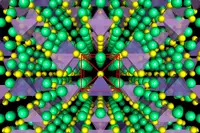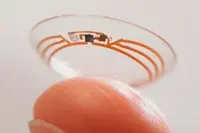Electronics News
Archive : 19 August 2015 год
 Researchers at MIT and Samsung, in conjunction with the University of California at San Diego and the University of Maryland, have developed a solid state electrolyte for lithium ion batteries and say their work could greatly improve device lifetime and safety, while boosting the amount of power stored in a given space.
Researchers at MIT and Samsung, in conjunction with the University of California at San Diego and the University of Maryland, have developed a solid state electrolyte for lithium ion batteries and say their work could greatly improve device lifetime and safety, while boosting the amount of power stored in a given space.
The results, reported in Nature Materials, describe an approach to the development of solid state electrolytes that could address the challenges associated with improving lithium ion batteries.
Solid state electrolytes could be 'a real game changer', according to visiting professor of materials science and engineering Gerbrand Ceder. The key to making this feasible, Ceder said, was to find solid materials that could conduct ions fast enough to be useful in a battery. "There was a view that solids cannot conduct fast enough," he said. "That paradigm has been overthrown."
The initial work focused on materials known as superionic lithium-ion conductors – compounds of lithium, germanium, phosphorus and sulphur. However, the team says the principles derived from its work could lead to even more effective materials. The solid-state electrolyte not only enables low temperature operation, it also brings a 20% increase in power density.
The research – part of an ongoing partnership with the Samsung Advanced Institute of Technology in the US – has also led to advances in the use of quantum dot materials to create highly efficient solar cells and sodium batteries, Ceder concluded.
Author
Graham Pitcher
Source: www.newelectronics.co.uk
 While optical technologies have the potential to reduce the power consumption of computers, speed telecommunications and make better chemical and biological sensors, the basic building blocks are mirrors and lenses, which lack the versatility to perform these functions and are difficult to scale.
While optical technologies have the potential to reduce the power consumption of computers, speed telecommunications and make better chemical and biological sensors, the basic building blocks are mirrors and lenses, which lack the versatility to perform these functions and are difficult to scale.
A new approach to designing optical technologies – based on a Mach-Zehnder interferometer – could overcome these limitations and pave the way for a new class of technologies that could give optics the kind of versatility seen in electronics. The work is described in a research paper published in Optica.
"Recently, optical researchers have begun to understand that these interferometers can be thought of as universal 'building blocks' that could enable us to construct essentially any optical device we could imagine," said Dr David Miller from Stanford University.
Previously, this approach would have only been feasible if the Mach-Zehnder interferometers could offer perfect performance. The new approach described in the paper says that, rather than engineering a perfect single component, it may be possible to create a mesh of interferometers that, when properly programmed, could compensate for its less than perfect parts and deliver overall perfect performance.
"It's this larger scheme that allows us to use reasonable, but imperfect, versions of these components," Dr Miller noted.
Mach-Zehnder interferometers split light from one or two sources into two new beams and then recombine them. Ideally, the beams would be split in 50:50 symmetry; however, the split is not perfect, which means that when the signal is recombined, it cannot be completely cancelled, preventing the optical path from being controlled.
The researchers say that if Mach-Zehnder interferometers could be assembled in large meshes and controlled, it would be possible to create a system with the necessary perfect performance. This would – in principle – allow the meshes to perform any 'linear' optical operation.
The process also required the development of algorithms that allow the meshes to be 'self configuring', adjusting how light paths are directed based on signals received from optical sensors embedded in the system.
"We are starting to do some things in optics that we have been doing in electronics for some time," Dr Miller continued. "By using small amounts of electronics and novel algorithms, we can greatly expand the kinds of optics and applications by making completely custom optical devices that will actually work."
Author
Graham Pitcher
Source: www.newelectronics.co.uk
 California based EPGL Medical Sciences says it holds what it believes to be the most potentially valuable patents pending in the field of smart contact lenses and is challenging Google to provide an update on the progress it has made.
California based EPGL Medical Sciences says it holds what it believes to be the most potentially valuable patents pending in the field of smart contact lenses and is challenging Google to provide an update on the progress it has made.
The move appears to be part of a fund raising exercise by the company. "We are actively seeking potential partners in what could become a very significant revenue space in the next several years; the 'augmented reality' or 'bionic vision' revolution is beginning," claimed Dr David Markus, the company's vice president of BioMems. "We believe EPGL will be a major player in this space going forward."
EPGL says it has several patents pending relating to smart contact lenses, including energy harvesting, autofocus and smart lens case technologies. It also claims to have developed ways that enable microelectronics to be placed into silicone hydrogel contact lenses for mass production, without changing the manufacturing process 'dramatically'.
"We have nothing but respect for [Google], but we believe our little six cent per share company is likely beating a $460billion giant in this coming revolution," said EPGL president Michael Hayes. "We're throwing down this public challenge to see if it has truly accomplished what we have."
Google announced last year a contact lens (pictured) that acts as a glucose sensor and entered a deal with Swiss based pharmaceutical company Novartis to commercialise this approach. However, the big market is likely to be for so called autofocus contact lenses. According to Novartis' CEO Joseph Jimenez, this market could be worth up to $50bn in the next ten years.
Author
Graham Pitcher
Source: www.newelectronics.co.uk

